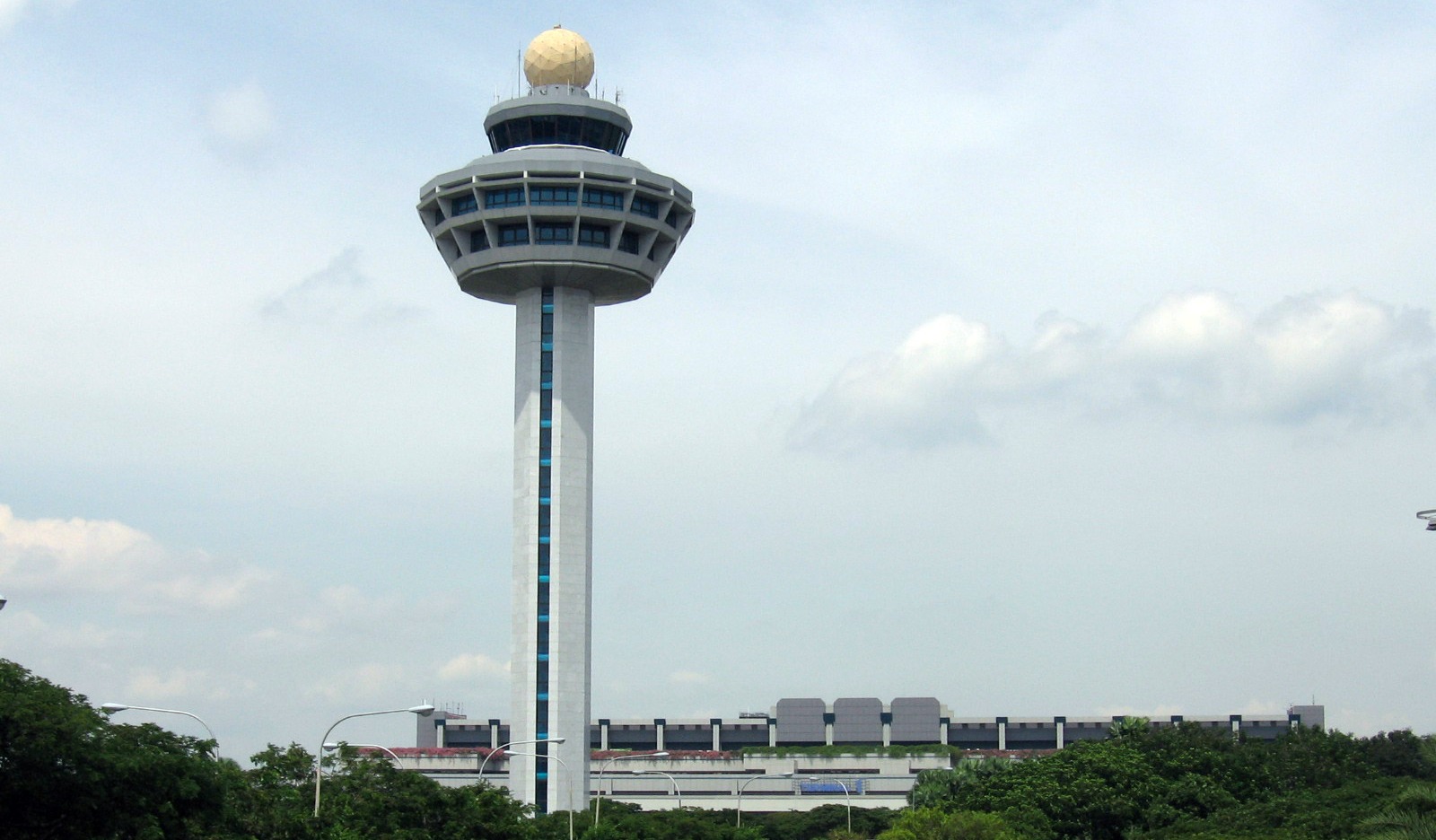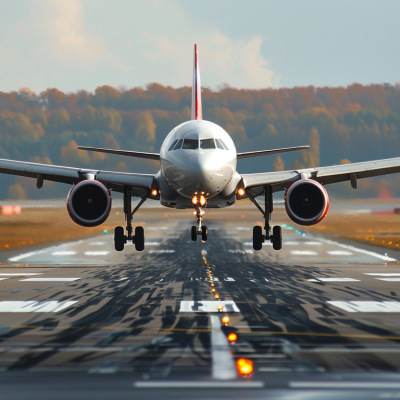Have you ever asked yourself, “Can planes take off in the rain?” It’s a common question that pops into many people’s minds as they watch a plane take off on a rainy day. The sight of a large aircraft racing down a wet runway can be a bit scary.
But don’t worry! The aviation industry has spent many years perfecting the process of flying safely in bad weather. From how planes are built to the careful planning of each flight, everything is done with your safety in mind.
In this blog post, we’ll examine what happens when a plane takes off in the rain. We’ll discuss how pilots, air traffic controllers, and ground crews work together to ensure that the aircraft can take off without any problems, even when the weather isn’t perfect.
So, get ready to learn about the amazing science and skill that goes into flying in the rain!
Primary Impact of Rain on Aircraft Performance During Takeoff
Rain significantly impacts aircraft takeoff performance primarily by reducing runway friction and altering aerodynamic properties.
When rain falls on the runway surface, it decreases the coefficient of friction between the aircraft tires and the pavement. ‘
This reduction in traction can lead to longer takeoff roll distances and an increased risk of hydroplaning, where the tires lose contact with the runway, potentially causing a loss of control.
Rain can also affect the airflow over an aircraft’s wings and fuselage. Water droplets disrupt the smooth flow of air, leading to increased drag and potentially diminished lift generation.
Consequently, a longer runway may be required to achieve the speed for a safe takeoff. The decreased runway friction poses challenges for effective braking during the takeoff roll.
Reduced braking performance could compromise safety if not managed appropriately, especially when aborted takeoff becomes necessary.
During heavy rainfall, there is a risk of water ingestion into the aircraft’s engines.
- If significant amounts of water enter the engines, it can lead to compressor stalls, surges, or even engine failures, adversely affecting the overall takeoff performance.
- Pilots undergo extensive training to handle takeoffs in wet conditions, including the use of advanced instrumentation and techniques to compensate for reduced visibility and altered flight dynamics.
- Strict adherence to wet runway procedures and decision-making protocols is crucial for safe operations.
Ground crews and pilots perform additional pre-takeoff checks and adjustments to ensure aircraft safety in wet conditions.
This includes verifying proper tire tread depth, ensuring anti-skid systems are functioning correctly, and conducting runway inspections to assess water accumulation levels.
Rainy Runway Incidents: Understanding the Risks and Challenges

Here are a few examples that highlight incidents where rain impacted takeoff operations:
- The 2016 Emirates Flight 521 incident in Dubai: On August 3, 2016, an Emirates Boeing 777-300 aircraft attempted to land at Dubai International Airport during heavy rainfall and strong winds. The plane touched down briefly before taking off again, but it was unable to gain sufficient altitude and crashed onto the runway. Fortunately, all 300 passengers and crew members were evacuated safely, but the incident highlighted the challenges posed by wet runway conditions during takeoff and landing.
- The 2007 TAM Airlines Flight 3054 accident in São Paulo, Brazil: On July 17, 2007, an Airbus A320 operated by TAM Airlines overran the runway during landing at Congonhas Airport in São Paulo. The plane crashed into a nearby building, resulting in the loss of 199 lives. Investigations revealed that heavy rainfall had contributed to poor braking action on the runway, exacerbating the accident’s severity.
- American Airlines Flight 1420 in Little Rock, Arkansas: In 1999, an American Airlines McDonnell Douglas MD-82 overran the runway during a nighttime landing attempt at Little Rock National Airport. The plane crashed into a structure and caught fire, resulting in 11 fatalities. The National Transportation Safety Board (NTSB) investigation cited heavy rainfall, reduced visibility, and gusty winds as contributing factors to the accident.
- The 2017 Delta Air Lines Flight 1425 incident in Atlanta: On April 18, 2017, a Delta Air Lines Boeing 737-900ER experienced an engine failure during takeoff from Hartsfield-Jackson Atlanta International Airport. The pilots safely aborted the takeoff, but the incident led to an evacuation of the aircraft. While the cause of the engine failure was not directly linked to rain, the incident underscored the importance of pilots being prepared for unexpected events during takeoff, especially in adverse weather conditions.
These incidents serve as reminders of the potential risks associated with operating aircraft in rainy conditions and the critical role that pilots, air traffic controllers, and airport staff play in maintaining safety.
While modern aircraft and airports are designed to handle challenging weather, continuous training, adherence to procedures, and proactive decision-making are essential to mitigate risks and ensure the well-being of passengers and crew.
Implications of Rain on Flight Scheduling and Safety Protocols
Rain, especially heavy or persistent rainfall, can significantly impact overall flight operations, necessitating meticulous planning and flexible scheduling.
Weather conditions play a crucial role in determining the feasibility and safety of flights, requiring airlines and aviation authorities to implement various measures to ensure smooth operations.
Airlines frequently adjust their schedules to accommodate weather delays caused by rain. This may involve delaying flights, canceling certain routes, or rerouting aircraft to alternative airports to prioritize passenger safety.
Such adjustments are made based on real-time weather data and forecasts, as well as assessments of runway conditions and air traffic congestion.
During rainy conditions, standard safety protocols are enhanced or specifically implemented to mitigate potential risks. These may include:-
- Increased pre-flight inspections,
- Adjustments in flight paths to avoid areas of severe weather,
- Reductions in airspeed during landing and takeoff to maintain better control over the aircraft.
In continuous adverse weather, such as extended periods of heavy rain, airlines, and airports implement additional measures to manage ground operations effectively, which predominantly are:
- The use of covered jetways to protect passengers during boarding and disembarking.
- Additional de-icing sessions for aircraft.
- The deployment of more ground support personnel to manage slick operations areas.
The Evolution of Weather Technology in the Aviation Industry

To anticipate and respond to weather changes effectively, airlines leverage advanced meteorological forecasting tools and maintain close communication with weather services.
Technological advancements in meteorological tools have revolutionized how airlines forecast and plan for weather-related disruptions in recent years. Some of the most significant developments include:
- High-resolution weather radar systems: Advanced radar systems provide detailed, real-time information about precipitation, wind patterns, and storm structures. These systems can detect and track weather phenomena with greater accuracy, allowing airlines to make informed decisions about flight routes and schedules.
- Satellite imagery and remote sensing: Satellites equipped with advanced sensors can capture high-resolution images of weather systems, providing a comprehensive view of global weather patterns. This data helps airlines understand the development and movement of weather systems, enabling them to plan accordingly.
- Numerical Weather Prediction (NWP) models: Sophisticated computer models use complex algorithms to simulate the atmosphere’s behavior and predict future weather conditions. These models consider a wide range of variables, such as temperature, humidity, wind speed, and pressure, to generate accurate forecasts up to several days in advance.
- Artificial Intelligence (AI) and Machine Learning (ML): AI and ML algorithms can analyze vast amounts of historical weather data to identify patterns and trends. By learning from past events, these systems can provide more accurate predictions and help airlines anticipate potential disruptions.
- Collaborative Decision Making (CDM) tools: CDM platforms enable airlines, airports, and air traffic control to share real-time information and coordinate their actions during weather-related disruptions. By facilitating communication and data exchange, CDM tools help stakeholders make informed decisions and minimize the impact of adverse weather on flight operations.
How Does the Airline Execute Takeoff During the Rainy Season or A Waterlogged Runway?

Airlines and pilots follow specific steps to make sure takeoffs are safe during rainy conditions or when the runway is wet:
- Checking the runway: Pilots and air traffic control carefully check the runway surface for standing water, how well it’s draining, and reports from other planes about braking conditions.
- Adjusting takeoff calculations: Pilots redo the math for the plane’s takeoff based on the wet runway. They think about things like runway friction, wind, and the plane’s weight to figure out the needed speed and runway length.
- Using the right takeoff method: Pilots use special techniques on wet runways. They might start the takeoff roll immediately to spend less time on the damp surface. They also smoothly and gradually control the plane to keep it going straight and stop it from hydroplaning.
- Special runway features: Many newer airports have high-speed exits and grooved runways to help water drain and lower the risk of hydroplaning. This helps keep the runway surface less slippery.
- Following safety rules: Pilots stick to specific safety rules for wet runways. These might include higher takeoff speeds, needing a longer runway, and limits on using reverse thrusters when landing.
- Working with air traffic control: Pilots stay in close contact with air traffic control for safe spacing between planes. Controllers might put more time and space between flights to let water drain and lower the turbulence risk from other planes.
By doing all these things and using their training, pilots can safely take off even when it’s raining hard, or the runway is very wet.
But if it’s too risky, like in a severe storm or flooding, they might delay or cancel the flight to be extra safe.
Final Words
In summary, while rain introduces challenges like reduced runway friction and altered aerodynamics, modern aircraft are engineered to handle adverse weather conditions during takeoff.
Adhering to strict safety protocols, employing specialized equipment, and relying on skilled pilots and air traffic controllers, airlines mitigate risks and ensure secure departures even amid inclement weather.
As a passenger, you can also take steps to prepare for rainy travel days. Arrive at the airport early to avoid potential delays and stay informed about your flight status. If you have concerns, ask the flight crew or ground staff for reassurance.
To further ease your mind, consider exploring our guides on flying during inclement weather, which offer practical tips for a smooth journey.
Remember, your safety is the top priority. Trust in the expertise of aviation professionals, and don’t let rain dampen your travel plans. Safe travels!






